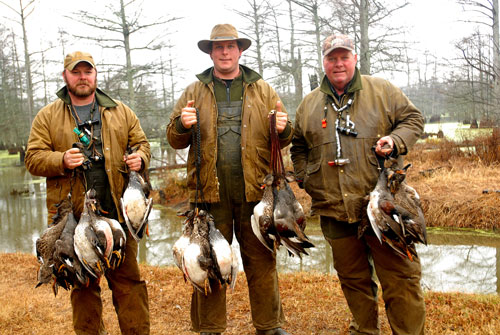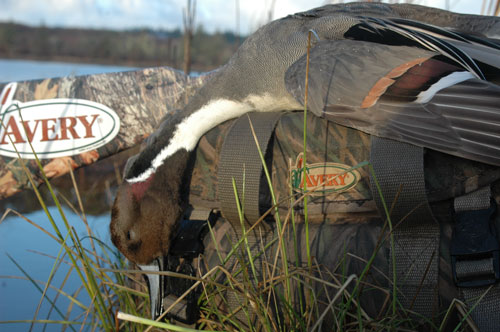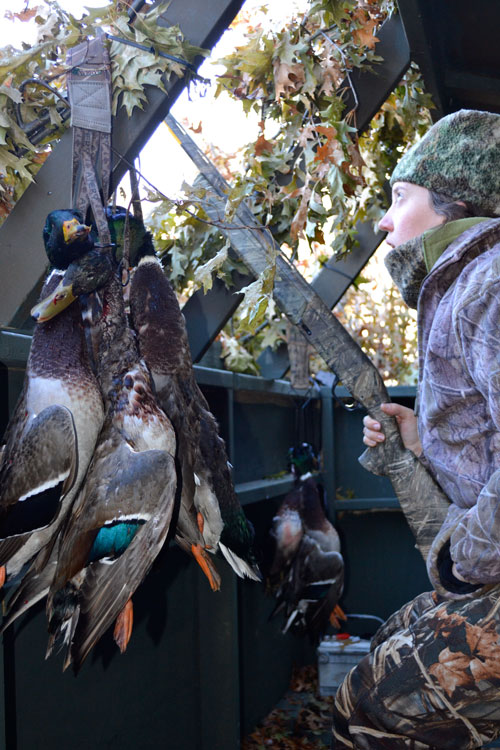 Where to go if you want one for the wall; that’s how the conversation with good friend Steve Sutton began. A consummate waterfowler and an accomplished decoy carver, Sutton, along with myself and my photographer/wife, Julia Carol, were winding down what was our personal inaugural hunt for harlequins in Washington state. The morning had been a success on several fronts — bad breakfast burritos at an out-of-the-way Mini-Mart, excellent weather, great company, an experienced skipper and 13 of the most incredible hand-carved and painted harlequin decoys we’d ever seen. By the time we picked up the rig shortly after lunch, two drake blue ducks and a drake surf scoter — an unexpected bonus, Sutton told us, especially over an all-harlequin spread — graced the gun locker; all three, we had decided earlier, destined for the wall of our home in eastern Iowa. It was while securing Sutton’s skiff at the ramp that the aforementioned taxidermy question was raised.
Where to go if you want one for the wall; that’s how the conversation with good friend Steve Sutton began. A consummate waterfowler and an accomplished decoy carver, Sutton, along with myself and my photographer/wife, Julia Carol, were winding down what was our personal inaugural hunt for harlequins in Washington state. The morning had been a success on several fronts — bad breakfast burritos at an out-of-the-way Mini-Mart, excellent weather, great company, an experienced skipper and 13 of the most incredible hand-carved and painted harlequin decoys we’d ever seen. By the time we picked up the rig shortly after lunch, two drake blue ducks and a drake surf scoter — an unexpected bonus, Sutton told us, especially over an all-harlequin spread — graced the gun locker; all three, we had decided earlier, destined for the wall of our home in eastern Iowa. It was while securing Sutton’s skiff at the ramp that the aforementioned taxidermy question was raised.
That evening over post-hunt Gentleman Jack, the topic came up again — where, I asked Sutton, would you go if you were looking for a perfect example, one suitable for mounting, of a particular species of waterfowl? Quickly, we agreed the question was a head-scratcher. The problem wasn’t a lack of opportunities; rather, that each species often had from three to a dozen or more logistical possibilities. Later, back in the Midwest, I spoke with several other men, all talented waterfowlers in their own right, and asked them the same question. Over time, a map, for lack of a better term, began to form; a guide to what could only be called The Best of the Best. What follows is that list, courtesy in part of ’fowlers from California to Rhode Island, but be warned. Should this guide prove infectious, your taxidermy budget is going to take a hit. Trust me on this one.
Cinnamon Teal – Great Salt Lake, Utah
Boat builder and fanatical waterfowler Tony Smith (lakebonnevillelayoutboats.com) is, by his own admission, a diver freak; however, as much as he loves gunning bluebills and goldeneyes, the late season will often see him walking the smaller flowages which dump into the Great Salt Lake’s Farmington Bay WMA in search of cinnamon teal. “It’s been my experience during the 24 years I’ve been here,” said Smith, “that, for whatever reason, the prime drake cinnamons are here in December, just as things freeze solid.” These beautiful teal, said Smith, concentrate on moving water — the two or three streams that flow out of the mountains and into the saltwater. “Jump-shooting can be productive,” he said, “but I really enjoy setting out four or five Greenhead Gear cinnamon decoys in a wide spot and waiting them out. It’s quiet, too,” he continued, “despite downtown Salt Lake City being only about 15 miles away.”
California’s Central Valley and any of several south Texas impoundments can provide additional late-season opportunities for handsome cinnamon drakes. TIP – If it’s a mounter you seek, small non-toxic shot such No. 6 or No. 7 steel is vital to keeping a bird nice.
Gadwalls – Beaver Dam, Mississippi
Gadwalls, also known as grey ducks, are the Rodney Dangerfield of puddle ducks — they get no respect, and I don’t know why. They decoy well, they respond well to calling, and they’re extremely good on the table. All this, and late-season drakes are some of the most handsome birds available. Legendary outdoor writer Nash Buckingham’s stomping grounds at Beaver Dam, MS, should be on your Must-Do List, particularly if your target is grey ducks. Mike and Lamar Boyd (beaverdamducks.com) have the program down pat.
Gadwall numbers are up, so it’s tough to pick a bad hunt; however, I’d stick to the Central Flyway, as in Missouri, Kansas or Oklahoma. TIP – Invest in one of Duck Commander Phil Robertson’s gadwall drake calls; they work.
Pintails – Sacramento Valley, California

The entire West Coast offers fantastic long-sprig pintail hunting, as does coastal Texas. The Cheyenne Bottoms in south-central Kansas is another option. TIP – I like to use drake-only pintail decoys, as the high white chests provide an outstanding visual at a distance. Too, and as sprig can be anti-social, I’ll often set a small group (six to 10) of drakes apart from my mixed puddle duck spread.
Mallards – Southern Missouri
 She’s being dubbed The New Arkansas, and with very good reason. In recent years, southeastern Missouri — the Bootheel, as she’s known among the natives — has truly come into her own in terms of waterfowling opportunities. No longer is the Show Me State just about big-antlered whitetails and hard-gobbling spring longbeards. “Southern Missouri has been a very well-kept secret, but that secret’s out now,” said Robert Watson, lead guide at the Bernie, Missouri-based Locked Wings and Labs (lockedwings.com) outfitting business. “We have some phenomenal duck hunting here. With the agricultural practices down here now, along with the moist soil management techniques and the work by the Missouri Department of Wildlife Conservation on their management areas, there’s plenty for the birds once they get down here,” he continued.
She’s being dubbed The New Arkansas, and with very good reason. In recent years, southeastern Missouri — the Bootheel, as she’s known among the natives — has truly come into her own in terms of waterfowling opportunities. No longer is the Show Me State just about big-antlered whitetails and hard-gobbling spring longbeards. “Southern Missouri has been a very well-kept secret, but that secret’s out now,” said Robert Watson, lead guide at the Bernie, Missouri-based Locked Wings and Labs (lockedwings.com) outfitting business. “We have some phenomenal duck hunting here. With the agricultural practices down here now, along with the moist soil management techniques and the work by the Missouri Department of Wildlife Conservation on their management areas, there’s plenty for the birds once they get down here,” he continued.
Arkansas is still a good bet, if it’s greenheads you seek; but so, too, are sleeper states like Montana and Wyoming. TIP – Don’t be too proud to keep that duck call in your vest pocket. Late-season mallards have heard a lot, so it’s often best to trust your guide’s judgment.






